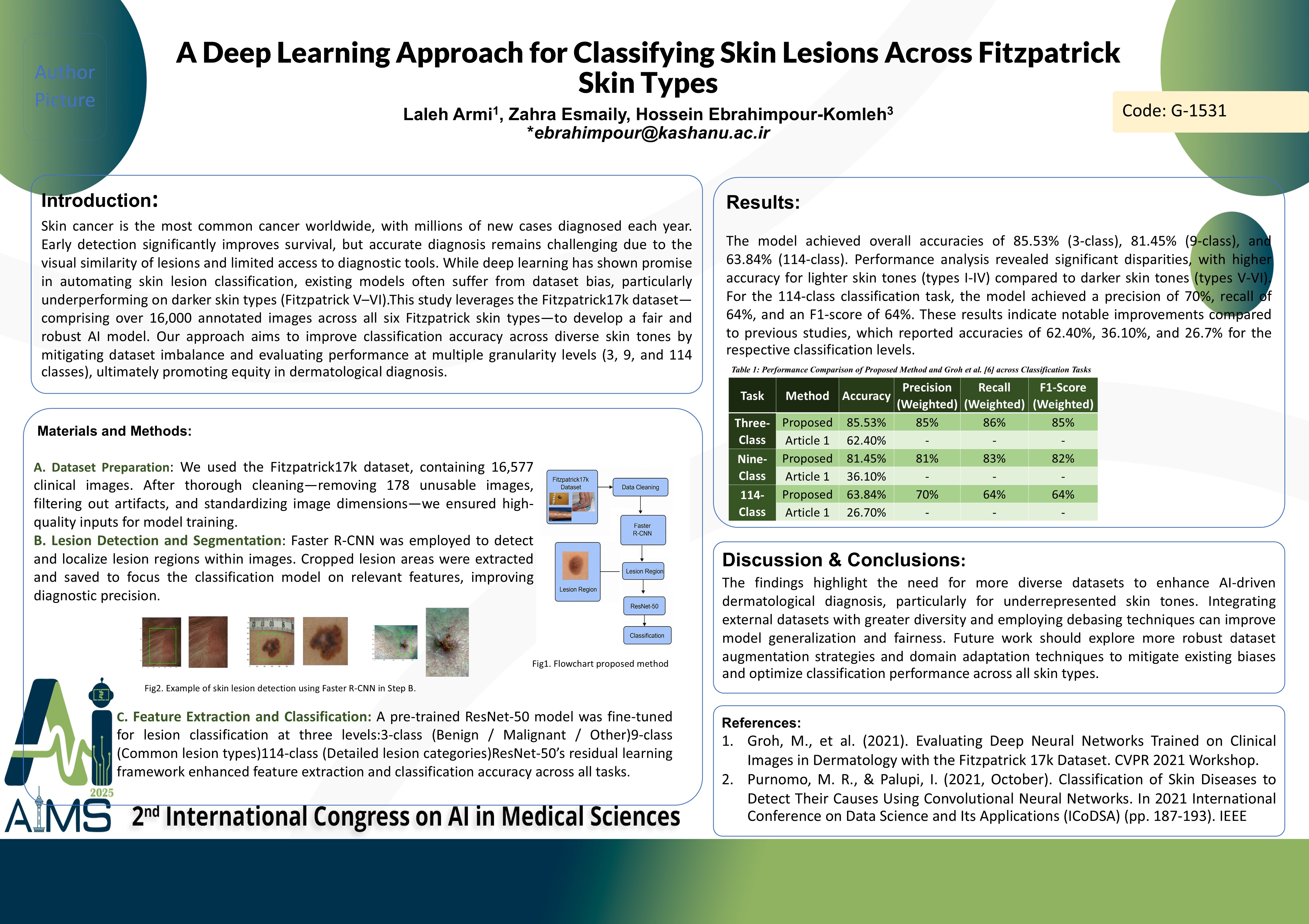یک رویکرد یادگیری عمیق برای طبقه بندی ضایعات پوستی در انواع پوست فیتزپاتریک
کد: G-1531
نویسندگان: Laleh Armi ℗, Zahra Esmaily, Hossein Ebrahimpour-Komleh *
زمان بندی: زمان بندی نشده!
برچسب: پردازش سیگنال های پزشکی
دانلود: دانلود پوستر
خلاصه مقاله:
خلاصه مقاله
Background and aims: The accurate diagnosis of skin lesions using artificial intelligence remains challenging due to the diversity of skin types and imbalances in datasets. This study utilizes the Fitzpatrick17k dataset, a collection of dermatological images annotated with Fitzpatrick skin types (I to VI), to improve classification performance across diverse skin tones. The primary aim is to evaluate the model’s accuracy across different skin types and address dataset bias using advanced deep learning techniques. Method: A deep neural network was trained to classify skin lesions at three levels of granularity (3-class, 9-class, and 114-class problems). The dataset includes clinical images labeled with both disease class and Fitzpatrick skin type. Additionally, Faster R-CNN was employed for lesion detection, followed by ResNet for classification. A debiasing approach based on variational autoencoders was used to mitigate dataset bias in deep neural networks, ensuring fairer model predictions across all skin tones. Results: The model achieved overall accuracies of 85.53% (3-class), 81.45% (9-class), and 63.84% (114-class). Performance analysis revealed significant disparities, with higher accuracy for lighter skin tones (types I-IV) compared to darker skin tones (types V-VI). For the 114-class classification task, the model achieved a precision of 70%, recall of 64%, and an F1-score of 64%. These results indicate notable improvements compared to previous studies, which reported accuracies of 62.40%, 36.10%, and 26.7% for the respective classification levels. Conclusion: The findings highlight the need for more diverse datasets to enhance AI-driven dermatological diagnosis, particularly for underrepresented skin tones. Integrating external datasets with greater diversity and employing debiasing techniques can improve model generalization and fairness. Future work should explore more robust dataset augmentation strategies and domain adaptation techniques to mitigate existing biases and optimize classification performance across all skin types.
کلمات کلیدی
Skin Lesion Classification, Deep Learning, FitzpatrickSkinTypes
